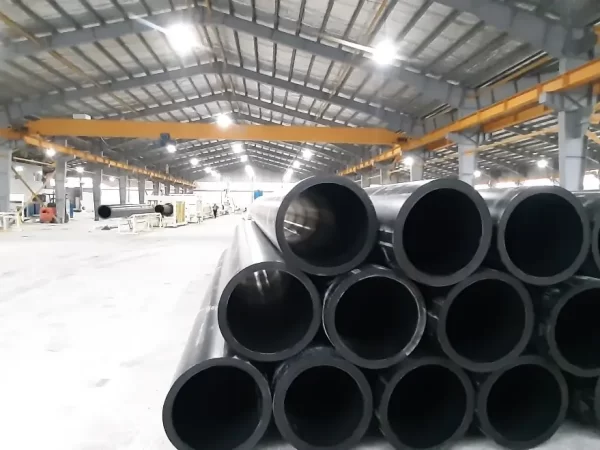HDPE in iran

Introduction
Polyethylene is one of the most commonly used polymers in modern industry. Although both Low-Density Polyethylene (LDPE) and High-Density Polyethylene (HDPE) are derived from the same monomer, namely ethylene, they exhibit considerable differences in terms of molecular structure, physical characteristics, production methods, and applications. Therefore, understanding the differences between these two types of polyethylene is essential for selecting the appropriate material for various industrial and commercial purposes.
HDPE in iran
1. Molecular Structure: The Fundamental Distinction
First and foremost, the primary distinction lies in their molecular architecture:
LDPE is characterized by a highly branched and irregular molecular structure, which results in increased flexibility and reduced density.
HDPE, on the other hand, features a more linear and tightly packed molecular chain structure, thus offering greater rigidity and higher density.
Consequently, the differences in molecular structure directly influence the behavior and performance of these materials in different environments.
HDPE in iran
2. Production Process: How They’re Made
In terms of production, LDPE is synthesized through high-pressure free-radical polymerization, which encourages chain branching. Conversely, HDPE is produced using low-pressure polymerization in the presence of catalysts such as Ziegler-Natta or metallocene, thereby ensuring a more linear and dense molecular structure.
As a result, the method of polymerization plays a crucial role in determining the final properties of the material.
HDPE in iran
3. Physical and Mechanical Properties: A Comparative View
| Property | LDPE | HDPE |
|---|---|---|
| Density | Lower | Higher |
| Transparency | Better | Often Opaque |
| Flexibility | Greater | Lesser |
| Melting Point | Lower | Higher |
| Strength | Lower | Higher |
| Hardness | Lower | Greater |
| Impact Resistance | Good | Excellent, yet can be brittle |
In comparison, HDPE offers superior tensile strength and environmental resistance, whereas LDPE stands out due to its softness and clarity.
HDPE in iran
4. Environmental Aspects and Recyclability
Both LDPE and HDPE are recyclable, however, HDPE tends to be more easily processed due to its simpler structure. Furthermore, while neither type degrades quickly in nature, they can both be converted into reusable products or energy through appropriate waste management systems.
Moreover, HDPE’s durability makes it especially suitable for long-term and outdoor applications, reducing the frequency of replacement and contributing to sustainability.
HDPE in iran
5. Applications in Industry
LDPE is commonly used for:
Flexible packaging (e.g., food films, grocery bags)
Wire and cable insulation
Soft containers and squeeze bottles
Greenhouse films and agricultural covers
HDPE is typically used in:
Piping systems and fluid storage tanks
Rigid containers and industrial packaging
Playground equipment and outdoor furniture
Fuel tanks and durable construction materials
Thus, the choice between LDPE and HDPE depends not only on mechanical requirements but also on environmental conditions and lifecycle expectations.
HDPE in iran
6. Shared Advantages and Similarities
Despite their differences, both materials share several advantages, including:
Excellent chemical resistance
Lightweight and cost-effective
Good electrical insulation properties
Compatibility with various forming processes (e.g., injection molding, extrusion)
Additionally, their versatility and adaptability make them suitable for a wide array of industries.
7. Choosing the Right Material
In general, LDPE is more suitable when flexibility, softness, or transparency are priorities, while HDPE is preferred for applications requiring strength, stiffness, or weather resistance.
| Need | Recommended Material |
|---|---|
| Flexible and soft packaging | LDPE |
| Rigid and impact-resistant products | HDPE |
| Long-term outdoor use | HDPE |
| High clarity and softness | LDPE |
Therefore, selecting the appropriate polyethylene type involves assessing both the mechanical needs and environmental demands of the intended application.
Conclusion
In summary, LDPE and HDPE, despite being derived from the same chemical base, offer distinct characteristics due to differences in structure and production. On the one hand, LDPE provides excellent flexibility and is ideal for film and soft packaging. On the other hand, HDPE offers superior mechanical strength and is better suited for rigid and structural applications.
Ultimately, understanding their respective advantages allows engineers, designers, and manufacturers to make well-informed material choices that optimize performance, sustainability, and cost-effectiveness.

